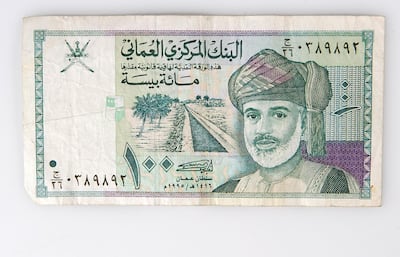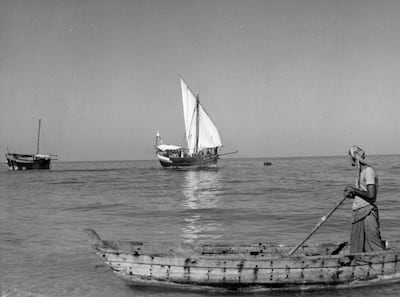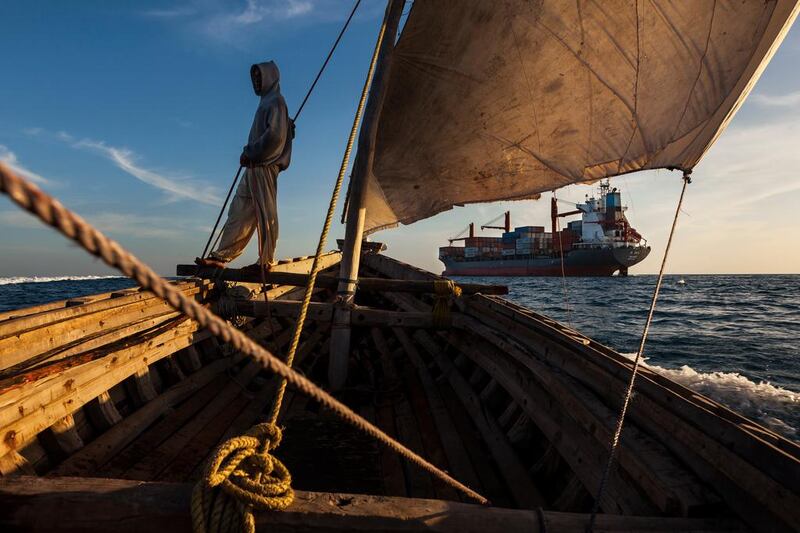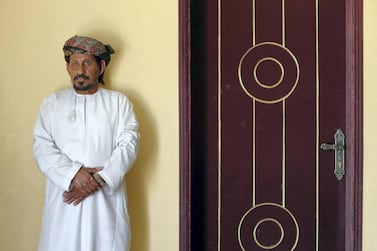Throughout the Gulf, the names of currencies reflect the history of global trade. And that history reveals a great deal about language itself.
Dinar is derived from the denarius, a Roman coin, while dirham goes back to the Ancient Greek drachma; rial comes from the Spanish real, meaning “royal”.
But one currency that expresses the shared past of an entire continent is the Omani rial, which is divided into baisa, a Hindi/Urdu loanword (paisa) with roots in Sanskrit. The word paisa, in fact, is spread all over the Indian Ocean world, from Myanmar to Mauritius and nearly everywhere in between.
I first noticed this word while reading the Egyptian author Sonallah Ibrahim's novel Warda, about the Dhofar Rebellion in Oman. It's more common to find Arabic loanwords in Hindi and Urdu than the reverse; Hindustani – the umbrella term linguists use to cover both Hindi and Urdu – uses thousands of Arabic words, which entered the language through Persian. These include everyday vocabulary like insan (person) or dunya (world).
But a word like baisa in Omani Arabic is no surprise. Like many Arabic dialects of the Gulf, it features loanwords from Hindustani, Persian, English, Portuguese, Swahili and other languages, revealing the linguistic routes of the Indian Ocean. In this case, paisa became baisa because Arabic generally lacks the “p” sound. Modern loans with this sound are usually rendered with “b”, as in bebsi (Pepsi). In antiquity, “p” more often became “f” in Arabic, seen in words like fil (elephant, from the Middle Persian word pil).

The cities of the Gulf have long been closely linked to India through trade. In 1835, Muscat’s currency was pegged to the Indian rupee (rupiya, or in Arabic rubiya), which is subdivided into paise (the plural of paisa). By the turn of the 20th century, trade with India accounted for half to as much as three quarters of overall trade in places like Bahrain, Muscat, and the Trucial States, which would later form the UAE.
The Indian rupee was in official circulation throughout much of the Gulf, to such an extent that it placed a strain on India’s foreign reserves. To address this issue, in 1959 India began to issue “Gulf rupees” for circulation outside the country. The Gulf rupee remained in use until the Gulf states introduced national currencies in the 1960s. Oman was the last to switch, holding on to the Gulf rupee up until the establishment of the Saidi rial (named for the ruling Al Said family) under Sultan Qaboos in 1970. In 1972, this was replaced with the Omani rial, subdivided into 1,000 baisa and still the official currency today.
The legacy of the paisa – which goes back to Sanskrit padamsa, a “quarter part” – stretches beyond Indian-Gulf trade. The first element of the Sanskrit word is also the source of the name of Thailand’s currency, the baht. Today, in South Asia, in addition to being one hundredth of a rupee, paisa just means “money”. The word exists all over India (from north to south), Pakistan, Bangladesh, Nepal and even the Maldives and Burma.

Afghanistan also used a rupee subdivided into paise in the 19th century. Though the afghani was established as the national currency in 1926 (which is why many Afghans don’t like to be called “Afghanis”), Afghan Persian and Pashto still use the word paisa to mean “money”.
Paisa also made its way around East Africa, leaving traces in Mauritius, Ethiopia, Somalia, Kenya, Tanzania and elsewhere. The word, or terms derived from it, still means “money” in many of the languages of the region, like Swahili (where it is spelled pesa). The money transfer service M-Pesa, first launched in Kenya, is named for mobile pesa, punning on its similarity to mapesa, the Swahili plural for “money”.
Though Indonesia lacks a derivative of paisa, its official currency is the rupiah, derived from the same Sanskrit word (rupya, meaning wrought silver) as the rupee of India. The Indian subcontinent and Southeast Asia have been in contact for thousands of years, and the languages of the Indonesian archipelago and Malay peninsula evince this history with their abundance of loanwords from Sanskrit and other Indian languages. The word rupiah even entered the languages of the aboriginal Yolngu people of northern Australia as the result of trade and exchange between them and the Makassans of Sulawesi (now part of Indonesia) during the 18th and 19th centuries.

Today, half a century after the rupee ceased to be an official currency in Gulf countries, you can still hear its echoes in colloquial Arabic. Older Bahrainis and Omanis might refer to rubiyat, and in some Gulf dialects bayza (or its plural bayzat) connotes “money”. More recently, pidgin forms of Arabic have sprung up, facilitating communication between local employers and migrant workers.
Along with the unique syntax of pidgin Arabic, the workers have introduced new loanwords among some in the Gulf. These are not limited to the names of foods like tamees, the Afghan bread beloved in the Hijaz, or the ubiquitous karak chai. They also include words that have become part of everyday communication like sida (straight), from the Hindustani sidha.
Indeed, Hindustani increasingly serves as a lingua franca within some communities of the Gulf, alongside Arabic and English. Many in the Arab world have learnt to understand Hindustani, and it is not uncommon to hear Malayalees and Bangladeshis speaking to each other in the language, which they may have even learned while working in the Gulf.
Language, after all, functions similarly to currency, as an abstraction that enables exchange through shared value. Words, like money, are useful because their meaning is agreed upon between speakers. This allows them to travel far beyond their initial contexts, just like the Indian rupee. And language can be a form of cultural capital; currently, English knowledge is a global marker of education and class distinction and facilitates international communication, but in past eras Arabic and Persian served similar roles across the Indian Ocean world. The languages of that interconnected world of Indian Ocean trade are palimpsests, constantly changing but still revealing layers of history forged through commerce and migration.
Alexander Jabbari is an assistant professor of Persian language and literature at the University of Oklahoma






